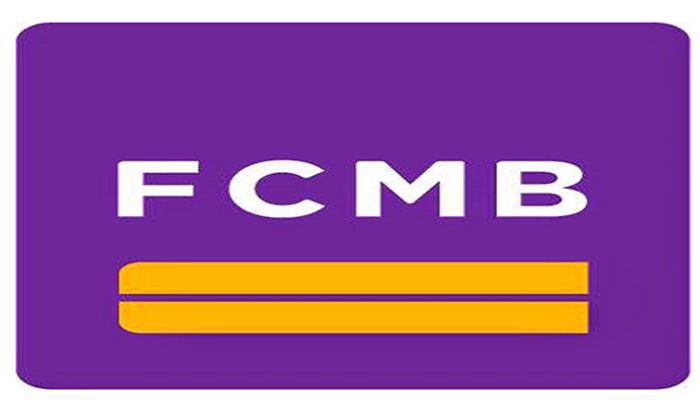June 13, 2018/ARM Research
We believe United Bank for Africa’s (UBA) solid fundamentals and financial positions remain intact. We upgrade our recommendation to STRONG BUY (previously: OVERWEIGHT) due to a slightly higher FVE of N14.10 (previously: N12.57). We expect its profitability to see meaningful improvement over 2018 on the back of deposit growth, increase in its loan book, expansion in its trading book, healthier asset quality, lower loan-loss provision, and resilience in fee income.
Consequently, FY 18E earnings should print at N84.6 billion (+8% YoY). That said, we lift our earnings forecasts in FY 19F and FY 20F to 21% and 10% respectively. This is on the back of lower funding cost, expansion in non-interest revenue (NIR) and markedly lower loan-loss provision. UBA trades at a FY 18E price-to-book (P/B) of 0.5x, at an undemanding discount to Tier 1 average of 0.9x. At current price, our expected dividend of N0.98 over FY 18E translates to a dividend yield of ~10%. Key risks include a decline in loan book and sticky NPLs which implies a slower than expected moderation in loan-loss provision YoY.
Solid growth in deposit but should fall short of guidance
Over 2018, we expect deposit growth of 10% YoY to N3.0 trillion, relative to management’s guidance of 18% YoY as FCY translation impact fades. Much of the expansion in deposit is expected to come from the tenured and savings deposit line, as the lower yield environment is expected to drive reversal in outflows over the period. Consequently, CASA as a share of total deposit should print at 73% by FY 18E (FY 17: 74.6%, Q1 18: 71.7%). Over Q1 2018, its deposit book expanded 4.1% QoQ on N2.85 trillion.
Appetite for short-dated facility will support loan growth
Though management guided to a 15% YoY growth in its loan book, we forecast loan growth of ~8% YoY to N1.78 trillion as we expect the bank to be relatively conservative on credit creation in Nigeria in the last quarter.
Management noted its strategy of reducing the duration of its loan book, reinforcing its appetite for short-dated facilities, though this requires a more aggressive stance on loan creation, due to the relatively higher frequency of loan maturity.
That said, aside from the risk benefit on shortdated facility, it also helps to increase the velocity of its loan book and thus creates upside to credit related fee income. In other countries of operation, management stated its appetite for trade finance, manufacturing, and oil & gas/resources. For context, in markets such as Burkina Faso, the bank is active in Cotton Campaign1.
In markets like Senegal and Ivory Coast, management seems positive on opportunities for infrastructure financing within the structures that fit into its risk acceptance criteria. In subsequent years, we forecast credit growth of about 10% apiece, largely emanating from credit growth in Nigeria.
Facility Prepayment drives weakness in net loans over Q1 18
While decline in net loans over Q1 2018 should inform a more cautious approach towards loan growth, the drivers for this decline largely informs our view of a growth in the next 3 quarters. Firstly, the increase in provision reserve by N34 billion impacted on the net loans, as gross loan remains relatively flat.
Furthermore, management noted that one of its Oil & Gas customers in Nigeria made notable prepayment of its facilities over the period, taking advantage of improved cash flow arising from stronger oil & gas production, oil price rally and proceeds of a debt capital market transaction consummated in the period. Also, management noted that one of its major customers in Ghana also made notable prepayment. From the bank’s perspective, it is healthier to accommodate these prepayments of loans than experience default on obligations.
NPL formation has peaked, healthier asset quality going forward
In prior year 2017, the spike in NPL ratio to 6.7% (+2.8pps YoY) was largely due to classification of its 9mobile exposure. So far, the bank has provided ~N15 billion against the loan, which is 38% of its exposure. Given the expected hair-cut on the asset of 22%, we think concerns on this line are now largely muted. Furthermore, N89 billion outstanding loans (5.2% of loan book) have been restructured as at Q1 2018. Consequently, we expect improvement in asset quality over 2018 with NPL ratio over FY 18 estimated at 5.2% (-1.5pps YoY). Farther out, we forecast NPL ratio to print at 4.5% and 4.0% in the period FY 19F and FY 20F respectively.
Lower provisioning but slower than prior expectation
We have adjusted our Cost of Risk (CoR) slightly higher to 1.7% (previously 1.5%) given our conservative stance on exposure to Commerce (16%), Power (9%), and Consumer sectors (6%). In subsequent years (FY 19F and FY 20F), we estimate CoR of 1.2% and 1.0% accordingly. Net impact of these adjustment implies loan-loss provision of N30.3 billion over 2018 (-8.0% YoY), N23.7 billion over 2019 (-21.8% YoY), and N21.8 billion over 2020 (-7.9% YoY).
Fee Income to support NIR over the near term
We estimate a benign non-interest revenue (NIR) growth over 2018 of 1.2% YoY to N120 billion (FY 19F: 4.5%, FY 20F: 7.5%), largely reflecting growth in net fee income (+17.5% YoY to N77.5 billion). Credit related fees, trade service income, e-banking income, remittance income; fund transfer income should drive the growth.
Irrespective, we expect a moderation in trading (-20% YoY) and other income (-10% YoY). From our estimate, the bank has ~$300 million derivative position which matures over Q3 18, and thus, we have taken a conservative approach of no new derivative position, which alongside lower yields on fixed income instruments, informs our view of a moderation in the trading line.
Impact of lower yields will be largely muted on NIMs
We expect the lower interest environment to only impact yield on treasury assets, given the relatively sticky yield on loan book.
Consequently, we estimate asset yield of 9.0% in FY 18E (FY 17: 9.1%). On the funding side, in line with trend over the first quarter, we expect further downward re-pricing of maturing deposit, to drive a downtrend in funding cost on deposit.
However, the bank’s N35 billion bond is expected to mature in September 2018, and we have factored a possible debt issuance to shore up its funding base, which brings overall funding cost slight higher by 10bps YoY to 3.8%. Therefore, Net Interest Margin (NIMs) is estimated to contract by 20bps YoY to 5.6%.
Positive earnings growth in the near term
Net impact of our overall adjustment translates to PBT of N112.7 billion over FY 18E. Thus, we estimate EPS of N2.47 (+7.6% YoY). We forecast EPS of N3.00 (+21.3% YoY) and N3.29 (+9.6% YoY) over FY 19F and FY 20F respectively. UBA trades at a FY 18E P/B of 0.5x, at an undemanding discount to Tier 1 average of 0.9x. At current price, our expected dividend of N0.98 over FY 18E translates to a dividend yield of ~10%.














